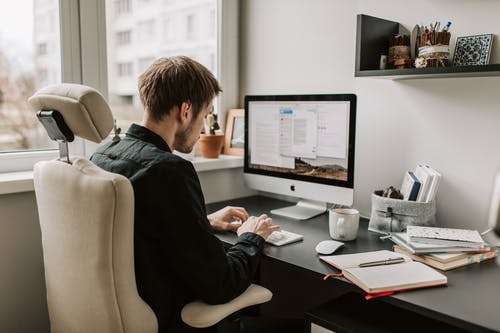There’s always this unmatched kind of thrill and pride you get when building your own stuff. Since you get a bigger reward, the more complicated the product is, building your own PC is pretty much at the top of the list. Moreover, deciding to build your PC using your two hands is a great way to get to know your computer on the most personal level, during which you get the opportunity to customize it just the way you desire. Although it’s not an easy task, we’ve rounded up some expert tips to help you build your very own PC.

Here’s what to keep in mind during your exciting venture.
Determine the Purpose of Your PC
First and foremost, you need to be clear on the PC’s purpose – long before you buy any components or start the assembly. That’s because the PC you build will vary greatly depending on its purpose. The components for building the ultimate gaming machine are different than those needed for an average PC that helps you throughout your office work. Likewise, PCs designed for creative fields like graphic and motion design and editing have special needs. In addition to the purpose, you want to consider how flashy you want your PC to be, which goes into the planning phase. Once you outline your motivations and needs, you’ll be more focused when shopping for components.
Choose Your CPU
The first components you’ll need to choose is the CPU – or the Central Processing Unit. The CPU is the brain of the PC that gives all commands and controls every other component. Since it’s the core of your PC, it needs to have enough power and specs to deliver the sought-after results. When looking for a good CPU, you’ll soon find out that you have to choose between Intel or AMD. Both brands provide supreme quality, but it’s the model you choose that will affect your motherboard choice. Moreover, it’s important to keep in mind that you still have more components to invest in while the CPU is important. Just try not to blow your entire budget on the CPU.
Make Sure Your Components Are Compatible
Thanks to the availability of information online, you’ll be able to find a myriad of step-by-step guides to help you build a customized PC. You’ll also come across scattered bits and pieces of information that alert you to all the cool hacks you can use to customize your PC or upgrade your current one. While that’s all good and dandy, Jeremy from https://pcbuilderz.com/ points out that testing the components’ compatibility is most crucial when you’re building your own PC. Even if each component promises great specs on its own, they’ll be completely useless if you can’t connect or assemble them. Imagine how heartbroken you’ll be if the motherboard you got doesn’t have the right socket type for your CPU!
Don’t Skimp on the Power Supply
It’s easy to focus on the CPU, motherboard, memory, and even monitor and neglect the rest of the components. Many enthusiastic PC builders think that by investing more in these components and less in other non-critical components, they’ll end up with a gem of their creation. While that’s a smart way to think, it’s still important to give everything the attention it deserves. For instance, skimping on the power supply is not one of those smart decisions. Here’s where we’ll need to stop you from making a grave mistake.
The power supply is akin to the beating heart of the PC; if you go for a cheap and second-rate model, you’ll risk the PC’s stability and all its components. There’s a big chance that this cheaper model won’t handle the high load the other high-end components impose on it. The best-case scenario is the cheap power supply will be damaged, and you’ll have to replace it, while the worst-case scenario is that it damages some of the precious components you’ve invested so much in.
Choose a Fitting Case
Unlike the power supply, you can afford to cut back a bit on the fitting case. However, it would help if you still looked for a case that can comfortably hold all your components. A good fitting case should also have good vent and fan placements to keep the airflow going. Moreover, the case should have enough space to manage your cables and keep them from getting tangles outside.

Although it can feel daunting at first, building your own PC can be done once you do your homework properly. Once you assemble your PC, it’s important to monitor the components’ performance by installing the designated software. That’s the best way to know for sure whether or not your assembly was a success.





